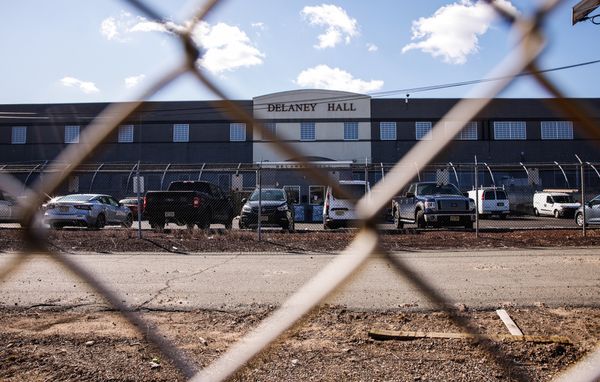More than half of the District Court complexes in the country do not have ramps, only 25.2% have availability of wheelchairs, and just 5.1% have tactile paving to assist persons with visual impairments in navigating the court building, said a recent report by the Centre for Research and Planning of the Supreme Court.
The first-of-its-kind report, released on December 15, sheds light on the glaring inadequacies in the infrastructure of District Courts across India, raising serious concerns about the impediments faced by people with disabilities in accessing justice.
Also read: Structured negotiation as a boost for disability rights
The report said while accessible toilets for people with disabilities hold fundamental importance, only 30.4% of District Court complexes have separate disabled-friendly toilets.
Visual Impairment
It highlighted that only 5.1% of District Courts have tactile paving to assist persons with visual impairments in navigating the court building. “Inclusivity and accessibility to justice can be ensured to persons with visual impairment by giving them instructions that are accessible to the tactile or auditory senses,” the report said.
Hearing Impairment
In a first, the Supreme Court in September last year allowed a deaf lawyer to argue virtually with the help of a sign language interpreter. The Delhi High Court too last year engaged the services of a sign language interpreter to enable a petitioner who was hearing impaired, to understand the proceedings.
While these may be positive signs, as per the report sign language interpreters who could be engaged to assist persons with hearing impairment in accessing court proceedings are available in only 2.8% districts in India.
Infrastructure Gap
The report revealed that out of a sanctioned strength of 25,081 judges in District Judiciary, there are 20,831 courtrooms highlighting infrastructure gap of 4,250 courtrooms.
The report said 73.5% of the available court premises are owned by the judiciary, 13.3% are owned by the respective state government, 2.6% (626 courtrooms) are rented premises, and 10.6% are under construction.
As per information received from the High Court of Jammu & Kashmir and Ladakh, 35 courts in the district judiciary of Jammu & Kashmir and Ladakh are functioning on an ad hoc arrangement from rented accommodation or otherwise.
The report said when courts function in private rented buildings or in stop-gap arrangements, they not only face the challenge of non-availability of necessary amenities but also of a secure work environment due to which all the stakeholders face inconvenience.
While the required provisions for people with disabilities are being made in the newly constructed buildings, with respect to the existing buildings, few High Courts have said that it is difficult to make alterations in the old buildings or those functioning from temporary accommodations due to structural limitations and space constraints.
The report said that the data signifies a “critical shortcoming” in the judicial infrastructure with respect to accessibility, necessitating concerted attention and action.
“There is a need for regular inspection by the concerned agencies like the Public Works Department in coordination with the District Judges to explore modifications that can be made in existing court buildings to make the judicial infrastructure disabled-friendly,” it said.







